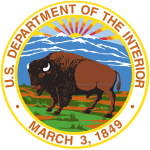Constitution Gardens
1976 establishments in Washington, D.C.AC with 0 elementsBuildings and structures demolished in 1970National Mall and Memorial ParksNorthwest (Washington, D.C.) ... and 1 more
Protected areas established in 1976

Constitution Gardens is a park area in Washington, D.C., United States, located within the boundaries of the National Mall. The 50-acre (200,000 m2) park is bounded on the west by the Vietnam Veterans Memorial, on the east by 17th St NW, on the north by Constitution Avenue, and on the south by the Reflecting Pool. Constitution Gardens has a small pond, which contains the Memorial to the 56 Signers of the Declaration of Independence on an island open to pedestrians.
Excerpt from the Wikipedia article Constitution Gardens (License: CC BY-SA 3.0, Authors, Images).Constitution Gardens
Elm Walk, Washington
Geographical coordinates (GPS) Address Nearby Places Show on map
Geographical coordinates (GPS)
| Latitude | Longitude |
|---|---|
| N 38.890833333333 ° | E -77.044166666667 ° |
Address
Elm Walk
Elm Walk
20227 Washington
District of Columbia, United States
Open on Google Maps










